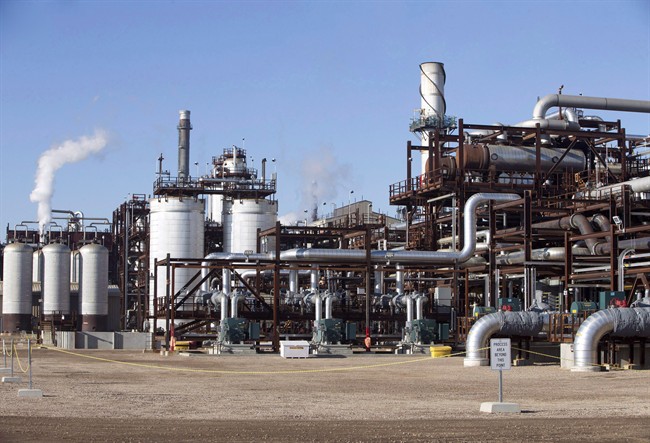Shell Canada says the Quest carbon capture and storage project north of Edmonton has reached the milestone of four million tonnes of stored carbon dioxide, equivalent to the annual emissions of about one million cars.

It says the accomplishment is ahead of schedule and has been attained at a lower cost than expected.
Quest opened in 2015 and cost about $1.35 billion, backed with $745 million from the Alberta government and $120 million from Ottawa.
READ MORE: Shell’s carbon capture project in Alberta’s oilsands passes milestone
The project was sold to Calgary-based Canadian Natural Resources Ltd. in 2017, along with most of Shell’s Alberta oilsands assets, but is still operated by Shell.
Carbon capture is exactly what it sounds like: capturing the carbon dioxide instead of allowing it into the already carbon-laden atmosphere.
Storage is also just that: storing the carbon somewhere other than our atmosphere, and that means deep underground.
Essentially, this allows emitters like power plants, factories and coal plants to still do what they are doing without the carbon footprint they would otherwise have.
These emitters would then store the carbon dioxide deep underground — really putting the CO2 back where it originally came from.
READ MORE: An explainer on how carbon capture works
The Quest facility captures and stores underground about one-third of the CO2 emissions from the Shell-operated Scotford Upgrader near Fort Saskatchewan, Alta., which turns oilsands bitumen into synthetic crude that can be refined into fuel and other products.
Shell says Quest has stored more carbon dioxide than any other similar project in the world and is doing it at a higher annual rate.
“Quest continues to show the world that carbon capture and storage is working, its costs are coming down and that Canadians are leaders in CCS,” said Shell Canada president Michael Crothers, estimating that building and operating a similar project now would cost 20 to 30 per cent less because of lessons learned at Quest.
READ MORE: Alberta oilsands deal shows bite of cheaper crude
As part of the government funding requirements, Shell and its partners made the designs and lessons learned from the project publicly available, which it estimates could save $100 million on engineering.
READ MORE: Why carbon capture tech is a tough sell despite dire warnings about climate change
WATCH BELOW: Then-energy minister Diane McQueen gave a tour of the Shell Quest facility being constructed near Fort Saskatchewan on Thu, Apr 17, 2014.
— With files from Melanie de Klerk, Global News



Comments